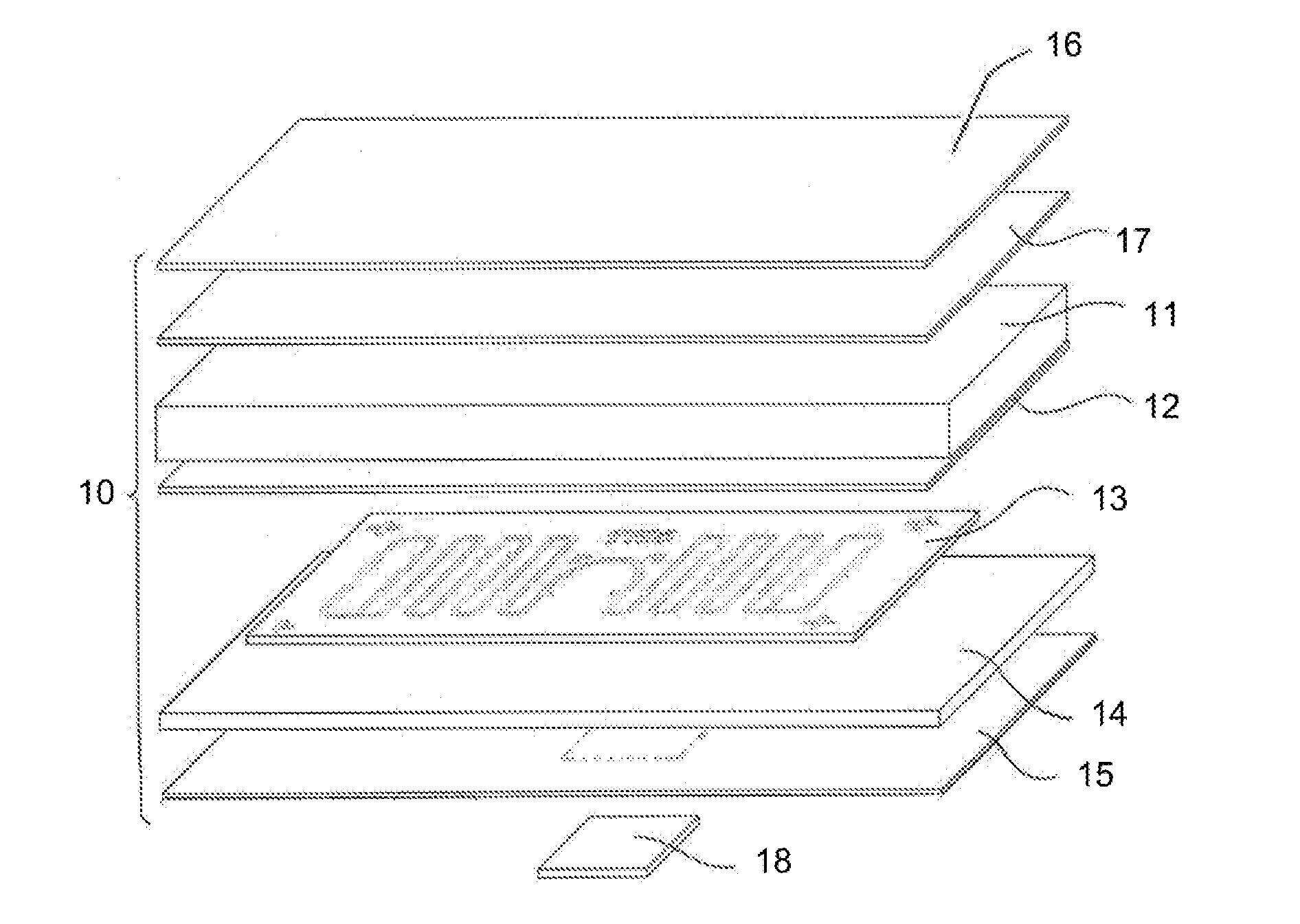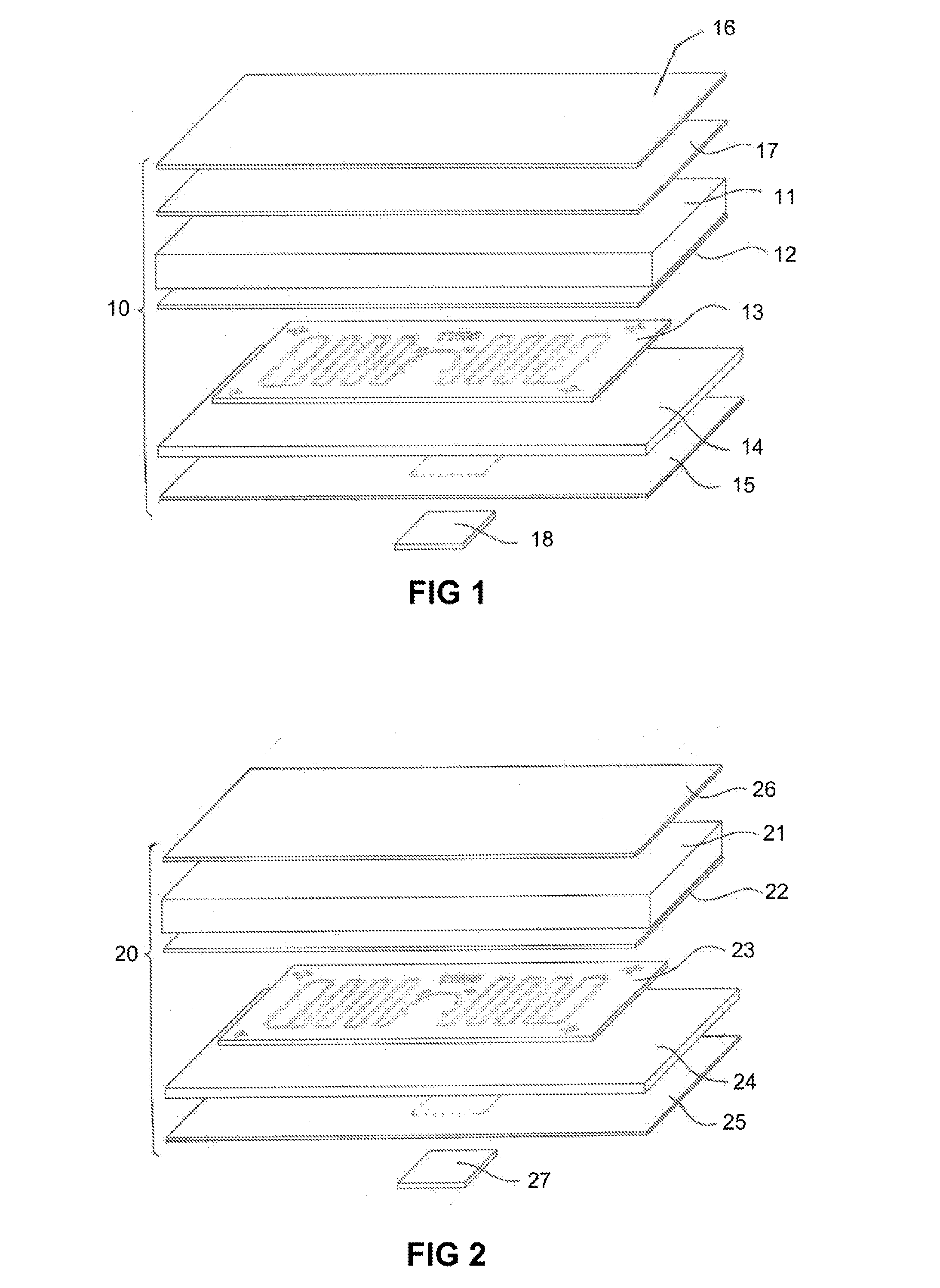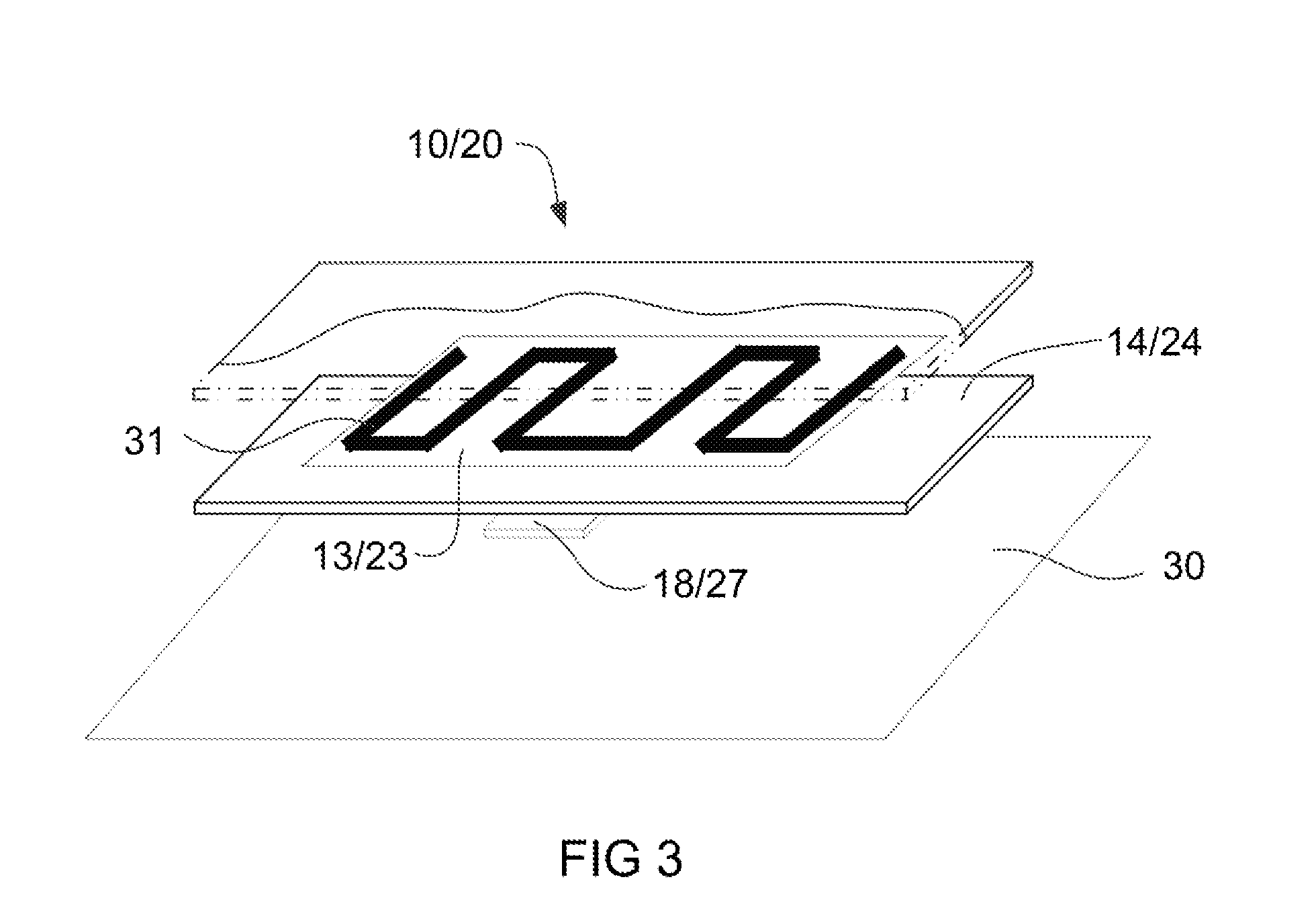RFID tag assemblies and process
- Summary
- Abstract
- Description
- Claims
- Application Information
AI Technical Summary
Benefits of technology
Problems solved by technology
Method used
Image
Examples
Embodiment Construction
[0025]A tag assembly method is described below with reference to FIG. 1. FIG. 1 shows a thermo patch assembly 10 comprising at least the following layers:
1. a top woven polymeric sheet or synthetic layer 11;
2. an adhesive layer 12 for a secondary antenna layer;
3. a secondary antenna layer 13;
4. a heat activated adhesive layer 14; and
5. a relatively thin pressure sensitive adhesive (PSA) layer 15.
[0026]Top woven polymeric sheet or synthetic layer 11 may include a PI, PEN or PET substrate that is relatively resistant to high temperatures including temperatures that may be at least 200° C. or more. In one form the top layer 11 may include a PI layer that is 30 μm to 100 μm in thickness. Secondary antenna layer 13 may be provided on a woven (textile or fabric) or plastics (PEN) substrate. Secondary antenna layer 13 may include a 17 μm-35 μm thick etched copper layer to provide the radiating loop of the secondary antenna.
[0027]An optional over-layer 16 such as polycarbonate sheet or poly...
PUM
| Property | Measurement | Unit |
|---|---|---|
| Temperature | aaaaa | aaaaa |
| Structure | aaaaa | aaaaa |
| Electrical inductance | aaaaa | aaaaa |
Abstract
Description
Claims
Application Information
 Login to View More
Login to View More - R&D
- Intellectual Property
- Life Sciences
- Materials
- Tech Scout
- Unparalleled Data Quality
- Higher Quality Content
- 60% Fewer Hallucinations
Browse by: Latest US Patents, China's latest patents, Technical Efficacy Thesaurus, Application Domain, Technology Topic, Popular Technical Reports.
© 2025 PatSnap. All rights reserved.Legal|Privacy policy|Modern Slavery Act Transparency Statement|Sitemap|About US| Contact US: help@patsnap.com



